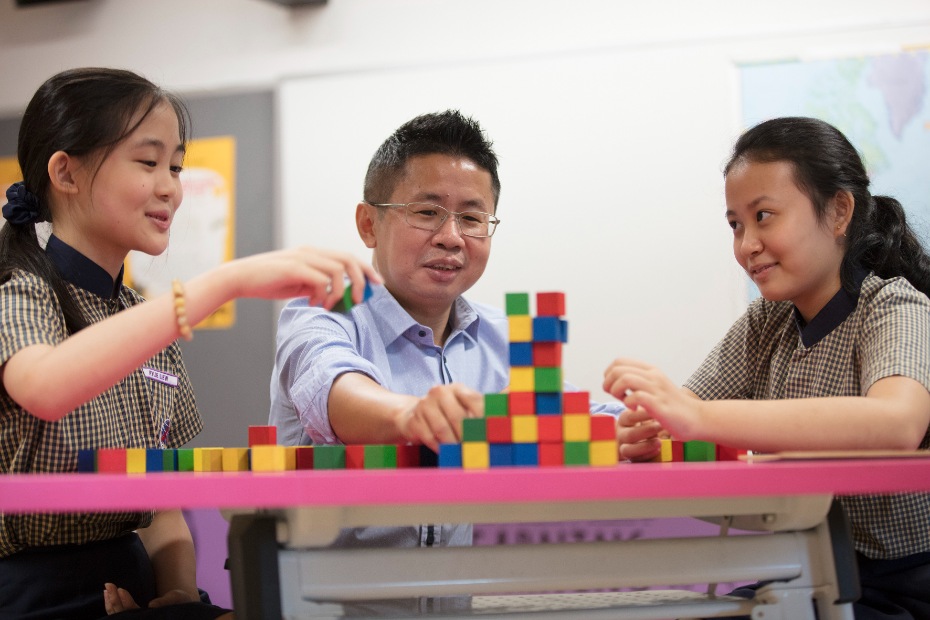Jason Khiang Jian Hao, Ngee Ann Polytechnic, President’s Award for Teachers 2021 Finalist
Many of Khiang Jian Hao’s students may be fresh out of secondary school, but he fervently believes the sky is the limit to what they can achieve.
“As much as they are young, I don’t see them as kids,” enthused Jian Hao (better known as Jason among the Ngee Ann Polytechnic (NP) community), the force behind the curation and launch of NP’s interdisciplinary Diploma in Design a couple of years ago.
“Today, even 12-year-olds can be successful entrepreneurs. It is up to us educators to give them the exposure and help them connect the dots,” he added.
Jason’s conviction is apparent in the way he structured the diploma course. From day one, his intention was to simulate industry conditions while helping students master the fundamentals of design skills. This involved prepping students for pitch presentations and making their creations marketable.
He is also quick to bolster confidence in his young charges. “We tell them from Day 1 that they’re going to be the next generation of innovators and disruptors, and we are here to enable them to do that. This includes cultivating the mindset that it’s better to fail fast, fail early. Most importantly, never stop trying,” said Jason.
As a result, even before graduation, many aspiring designers from NP are legitimate practitioners with commercialised products—some have even started their own business.
Teamwork makes the dream work
Jason, who became a full-time educator in 2016, after working in various design centric companies and agencies, is adamant that successful designers cannot work in silos.
Drawing on his past experience, he says, “If you are designing a physical product, you’ll need to work with a mechanical engineer. If you design an app interface, you need to work with a developer.”
This is why interdisciplinary collaboration underpins NP’s Diploma in Design programme. Prior to its rollout, lecturers were mainly working within their modules. But Jason wanted students to see the connections between subjects and their combined relevance for a real-world project.
He began sourcing for industry partners, ranging from furniture companies and banks to non-profit organisations and public sector agencies, to discuss the ways his students could potentially come up with feasible innovative solutions for them through design.
The industry projects have become a main thrust of each term and they require students to apply domain knowledge from various modules such as model making, design thinking, research and more. The projects and modules in the three-year course expose students to the core pillars of design, business, technology, and innovation, based on a skills framework drawn up by the Design Singapore Council.
“Today you see designers working not only in design firms, but increasingly in the non-design sector as well. By giving them a broad-based education, we allow them to fit into any company through the power of design,” Jason said.
Taking it to market
Complementing the course is etc lab, an interdisciplinary design and research centre which Jason co-chairs.
“etc” stands for “empowering the communities”. The lab embodies the belief that good design can empower communities. Jason, together with the etc.lab team, identifies opportunities for partnerships with organisations and mentors students in projects.
The lab, housed within NP, helps students commercialise their ideas, with the support of a hired designer and architectural associate. They have completed projects such as designing playgrounds, and a student hangout space cum banking branch within NP in partnership with UOB.
Spreading the word
While interdisciplinary work requires lecturers in the department to work in a different way, Jason’s colleagues were quick to back his vision. They saw the potential in rigorous industry projects and the increased demand for interdisciplinary designers. “It wasn’t hard to get the team’s buy-in because everybody wants the best for our students,” he said.
“At first, we introduced this interdisciplinary way of working within the product design course. Later, we collaborated with the architectural course, which worked out even better. We are now exploring collaboration opportunities with other schools within Ngee Ann Polytechnic and we are thinking of curating such collaborations into our service-learning model. This means allowing students to collaborate across schools to do more for under-served communities,” Jason said.
Giving opportunities to shine
There is never a dull day for Jason’s students, who are put through the challenge of pitching their ideas to companies every term while honing their technical skills and design thinking. Some of their big efforts have resulted in huge payoffs, including the chance to exhibit their work at high-profile events and network with potential employers.
Before the Covid-19 pandemic, students would regularly showcase their works, alongside those by renowned designers, at SingaPlural, the flagship event of Singapore Design Week and the International Furniture Fair Singapore (IFFS). “We have never failed to shock the community in a positive way. Visitors didn’t realise they were students’ works!” Jason recalled with pride.
By exhibiting at high-profile events, students become comfortable sharing about their designs, sometimes to Ministers, and some have even been offered jobs by design companies. “Presenting becomes second nature to them after that,” he added.
At the height of the pandemic in 2020, Jason urged his students to be entrepreneurial and think of ways to serve the community. As a result, a few students initiated a fundraising campaign by designing and selling T-shirts to benefit migrant workers. They ended up exceeding their target of raising $6,000, thanks to a viral social media drive.
Most recently, in collaboration with Jalan Besar Town Council and a few other community partners, his Year 2 students were hard at work trying to revamp community spaces based on interviews and observations conducted with residents. To help bring these ideas to life, some partners have even requested for his students to join their company as interns.
These are only a small selection of success stories that Jason and his colleagues have facilitated for each cohort of 70-odd students. More than just developing technical knowledge, Jason hopes that the exposure to different types of projects and stakeholders allows his students to hone their soft skills.
“It is easy to throw around the word ‘collaboration’, but it is really difficult to do. It is understanding that you cannot do this alone, that you need to respect other people’s opinions and learn how to influence others,” said Jason.
His latest project: formulating a new Design Entrepreneurship module, which requires students to crowd-source public support for their ideas through platforms like Kickstarter and Indiegogo.
Outside the ‘designer’s cave’
While the Diploma in Design is only in its second year, Jason is proud to share that graduates of its preceding course (Diploma in Product Design & Innovation)—which he also taught—have already seen the benefits of having a broad mindset. “They didn’t have difficulty landing jobs or qualifying for university,” he said.
Jason strongly believes that the upcoming cohorts will only continue to achieve greater success by going beyond their silos— he calls it a “designer’s cave” — and expanding their circle. “It’s not helpful for us to say it’s important to go and know more people. We have to show them how networking works. All this bridging we do with the industry eventually broadens their network. They soon realise it’s easier to do projects when they know other people. Success stories spread like wildfire so they are more motivated to practice it,” he said.
His proudest moments run a wide gamut, from seeing industry recognition for his students’ works to being able to help even the most self-doubting students stay the course, graduate and eventually even win awards.
A memory that stuck was the time he hired a former student to work on a project together. The alumnus ended up teaching him many new and better ways of doing things. “As an educator and a practitioner, I am very fortunate to be able to influence and impact. It was a proud moment, when my student was also able to do the same in return. It’s like things have come full circle,” he said.







